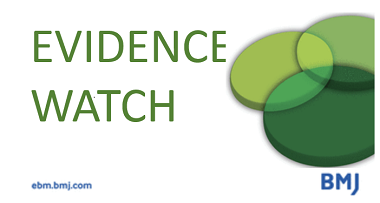Can a diagnosis of coeliac disease in children be made without doing a biopsy?
Annette Pluddemann
 Current NICE guidelines recommend that in children referred with a positive serological test result, further investigations to rule in or rule out coeliac disease may use combinations of IgA EMA serological testing, HLA genetic testing and endoscopic biopsy. But how accurate are these tests?
Current NICE guidelines recommend that in children referred with a positive serological test result, further investigations to rule in or rule out coeliac disease may use combinations of IgA EMA serological testing, HLA genetic testing and endoscopic biopsy. But how accurate are these tests?
A recent multicentre prospective coeliac disease diagnostic evaluation study evaluated European Society of Paediatric Gastroenterology, Hepatology, and Nutrition diagnostic criteria (1), which recommend using tissue-transglutaminase (TGA-IgA) 10-fold or more the upper limit of normal, confirmed by detection of endomysium antibodies (EMA) and positivity for HLA-DQ2/DQ8.
What did the study authors do?
The authors collected data from consecutive patients younger than 18 years old on a gluten-containing diet who had tested positive for TGA-IgA from 33 paediatric gastroenterology units in 21 countries. They recorded symptoms; measurements of total IgA, TGA, and EMA; and histopathology findings from duodenal biopsies. The primary aim was to determine whether a non-biopsy approach identified children with coeliac disease with a positive predictive value (PPV) above 99% in clinical practice (ruling in the disease with sufficient accuracy to not require a biopsy).
What did the authors find?
Data from 707 children showed that a positive EMA serological test and the presence of any symptom identified children with coeliac disease with a PPV of 99.75% (95% CI 98.61–99.99%). When only malabsorption was considered as a symptom, the PPV went up to 100%. Including HLA testing did not increase the accuracy.
Implications for clinical practice
This study shows that in children presenting with any symptom who have a positive EMA test and high TGA-IgA (≥10-fold the upper limit of normal) a biopsy is not required to diagnose coeliac disease.
Current NICE guidelines recommend considering HLA testing in children who are not having a biopsy. However, this study shows HLA testing does not increase diagnostic accuracy. The results from this study have significant implications for practice as they would avoid the risks of unnecessary endoscopy and potentially lead to more rapid diagnosis, be a cost saving as fewer biopsies will need to be performed, and avoid undue stress and harm for the child.
Reference
Husby, S. Koletzko, I.R. Korponay-Szabo, et al. European Society for Pediatric Gastroenterology, Hepatology, and Nutrition guidelines for the diagnosis of coeliac disease J Pediatr Gastroenterol Nutr, 54 (2012), pp. 136-160
Annette Pluddemann is Director of the MSC in EBHC and Research Fellow at the Centre for Evidence-Based Medicine, Nuffield Department of Primary Care Health Sciences, University of Oxford.
Competing interests: None declared

BMJ Evidence-Based Medicine – original evidence-based research, insights and opinion
Read more about BMJ EBM content in the Welcome to BMJ Evidence-Based Medicine Editorial.